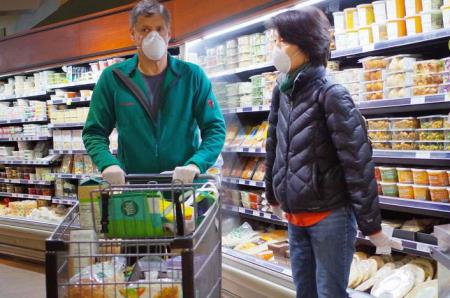 Market research group, C+R recently conducted a survey among 2,000 consumers concerning purchasing habits and cost of food. Approximately 85 percent of those surveyed considered that they are paying more for groceries with an escalation in the price of protein as the major contributor to food inflation. The respondents claim to have paid 68 percent more for meat compared to February, 48 percent more for milk and eggs, 45% for fish and 28% for poultry.
Market research group, C+R recently conducted a survey among 2,000 consumers concerning purchasing habits and cost of food. Approximately 85 percent of those surveyed considered that they are paying more for groceries with an escalation in the price of protein as the major contributor to food inflation. The respondents claim to have paid 68 percent more for meat compared to February, 48 percent more for milk and eggs, 45% for fish and 28% for poultry.
The figure for eggs may be misleading since prices were relatively low in February, but for the past month retail prices have demonstrated successive weekly rises as a result of seasonal demand. Escalation in the price of meat is understandable given that supply chains were seriously disrupted by COVID-19 plant shutdowns. In contrast, poultry processing plants were relatively unaffected, and supplies were only constrained by the surge in panic buying during March. At the present time, supply of most chicken and derived products is in balance with the demand with stable prices. The survey did not consider turkey meat that has risen in price attributed to a judicious reduction in supply after a long period of negative margins resulting from over-production. Consumption through the traditional Thanksgiving and Christmas periods will be depressed in 2020 impacting this segment of the industry.
The survey also showed that 75% of respondents were paying more for household goods including 59% for cleaning supplies, 39% for paper products and 33% for personal care and cosmetics.
 A surprising 83% of respondents reported difficulty in finding specific grocery items, again reflecting disruption in supply chains. An additional factor is that food producers have narrowed their ranges of products in an attempt to rationalize the logistics and cost of manufacturing and packaging. Approximately 90% of consumers were concerned that groceries will continue to increase in price and almost the same proportion consider that current shortages will continue.
A surprising 83% of respondents reported difficulty in finding specific grocery items, again reflecting disruption in supply chains. An additional factor is that food producers have narrowed their ranges of products in an attempt to rationalize the logistics and cost of manufacturing and packaging. Approximately 90% of consumers were concerned that groceries will continue to increase in price and almost the same proportion consider that current shortages will continue.
The effect of increased job losses and the delay in introducing a second stimulus package has resulted in 65 percent of consumers reducing their expenditure on food compared to the onset of the pandemic. To economize, 43% of families are eating less meat, 33% less poultry, 31% were avoiding higher-priced organic items, and 30% are buying in bulk. This is reflected in the quarterly sales data posted by club stores including Costco and Sam's.
Casting forward, shoppers do not share the Administration view that the end of COVID is "around the corner" or that the disease "will just go away soon". Twenty-three percent consider that they will return to shopping at pre-pandemic levels only in the spring of 2021, 20 percent estimate during summer of 2021 with five percent each for the fall or winter of 2021.
Disquietingly there is little confidence in a vaccine as only ten percent of those surveyed consider that the availability of an effective and safe product will encourage a return to pre-pandemic purchasing patterns. Consistent with Maslow's Hierarchy of needs, 68 percent of consumers indicated that they would devote the majority of any second stimulus check to groceries and food.
Consumers are concerned that a second wave of COVID-19 will result in additional shortages of grocery products and most shoppers have accepted the inevitability of higher food prices. Contrary to the "pantry stuffing" displayed in March and early April, fully a third of respondents have stored only enough food for two weeks or less. This is possibly a reflection of growing financial restraints.
A further take-away from the C+R survey is that 70 percent of respondents believe that grocery shopping will change permanently. A similar proportion still express "discomfort" when shopping and 70 percent have used grocery delivery or pick up for the first time since the emergence of COVID-19. Contrary to prevailing political rhetoric, almost half of consumers are disinclined to patronize a store that does not have a mask policy.
The food industry and retail grocers should accept the results of the C+R Survey and plan for a continuation in current COVID trends over the intermediate term. The willingness to return to previous patterns of selection and purchase will depend on restoration of the economy. This goal will be totally driven by realistic control of COVID through a combination of protective measures and immunity stimulated by vaccines. Societal disruptions caused by COVID will persist through 2024 including divergence in income among ethnic and cultural demographics, altered spending patterns, more stringent entertainment priorities, remote education, lower population growth and changes in location of residences. The food industry will have to be sensitive to these changes and respond accordingly.